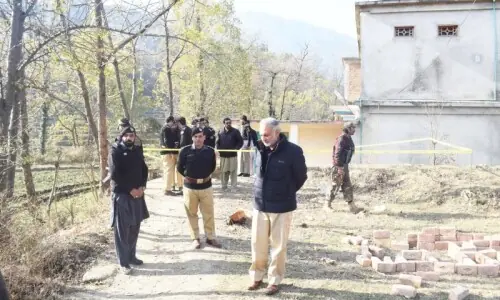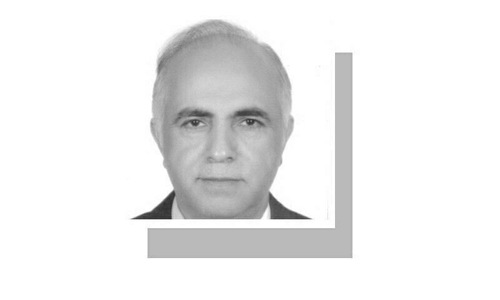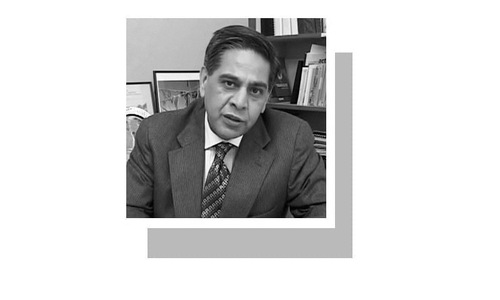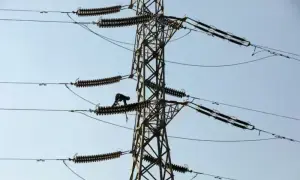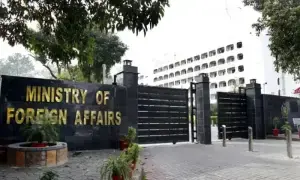AFTER several weeks of protests in Sindh, the canals controversy is now also being echoed on national platforms. President Asif Zardari had to retreat from his earlier endorsement of these canals while addressing the recent joint parliamentary session.
The Sindh Assembly, too, adopted a comprehensive resolution against the proposed canals. With the exception of the ruling PML-N, virtually all mainstream parties have denounced the plan of new canals for the grand corporate farming initiative in Cholistan. The Sindh government has already approached the Council of Common Interests, which is constitutionally mandated to settle water-related conflicts. The CCI has not convened for more than a year in violation of its constitutional obligation to meet on a quarterly basis.
The contentious project is not only detrimental to agriculture and the deltaic ecosystem but will also aggravate water woes in Sindh’s urban centres. The municipal, industrial and commercial needs of sprawling urban populations are rising rapidly. Karachi, Hyderabad and Sukkur endure chronic water deficit. Karachi meets 85 per cent of its water needs from the Indus river’s flows. Likewise, Hyderabad, Larkana and Sukkur depend solely on the Indus to quench their thirst. Hence, the urban population is not immune to the consequences of the Indus’s dwindling flows.
The Sindh irrigation department has issued a drought warning for several districts of the province including Karachi and Hyderabad. Water in the Tarbela Dam has plummeted to almost dead level. As flows diminish in the Indus, contamination of the water increases. Pollutants enter the Indus through its tributaries upstream. Untreated municipal, agricultural and industrial effluent is freely discharged into the river and the streams entering it. As water declines during the low flow period, dilution decreases and contamination intensifies. Ironically, the Water Apportionment Accord of 1991 limits its focus to water quantity and does not extend to water quality.
Manchhar Lake has become a perennial sink for pollution from the Right Bank Outfall Drain that offloads into the Indus near Sehwan, which then reaches Kotri Barrage around 140 kilometres downstream. The situation worsens in winter when the Indus does not have sufficient water to dilute its impurities. Hyderabad is hence exposed to toxic tapwater in the low flow period. In March 2024, an alarming rise in total dissolved solids (TDS) in the Indus forced the authorities to stop water supply to Hyderabad to prevent a health disaster.
Karachi is no less vulnerable to contaminated faucet flows.
The Water and Sanitation Agency detected 790 milligrams per litre TDS in a sample against the 500 mg/l threshold set by the WHO. It was a chilling reminder of May 2004 when toxic flows of over 1,500 TDS resulted in the death of around 50 persons in Hyderabad. Any further diversion upstream is likely to deprive Kotri Barrage of sufficient flows to combat the pollutants flowing into the Indus, thus increasing the risk of death and disease among residents of the Hyderabad, Tando Mohammad Khan and Badin districts.
Karachi is no less vulnerable to contaminated faucet flows. Karachi receives Indus water through the Kalri Baghar Feeder canal off-taking from the right bank of Kotri Barrage. The water meant for Karachi is first stored in Keenjhar Lake and then conveyed to the Dhabeji and Gharo pumping stations.
As pollution levels rise at Kotri Barrage, the KB Feeder also transports the same contaminated water to Keenjhar Lake. On the way to the lake, the canal gathers more pollution from the Kotri and Nooriabad industrial areas, along with municipal waste released by settlements along its banks. Shrinking flows at Kotri will not only reduce supplies for Karachi but will also increase the risk of contamination and thus public health hazards for Karachi’s residents.
Water of poor quality is a major source of morbidity. In 2016, the Supreme Court appointed a commission under the Sindh High Court to inquire into Sindh’s drinking water woes. Under the commission’s supervision, the Pakistan Council of Research in Water Resources tested 336 water samples from different sources and locations. The shocking find was that 251 (75pc) of the samples were unfit for human consumption.
Additionally, the dry stream below Kotri Barrage harms the mangroves, a natural shield against the increasing frequency of cyclones. Karachi is a most vulnerable location that requires lush mangrove cover to reduce the impact of cyclones and tsunamis.
As new canals are being planned in Punjab, the lower riparian Sindh is resenting the plan for fear of further curtailment of Indus flows. The implications are not limited to the farm sector or the rural areas. The economy and public health in the urban areas will also suffer from water shortages.
The writer is a civil society professional.
Published in Dawn, March 15th, 2025














